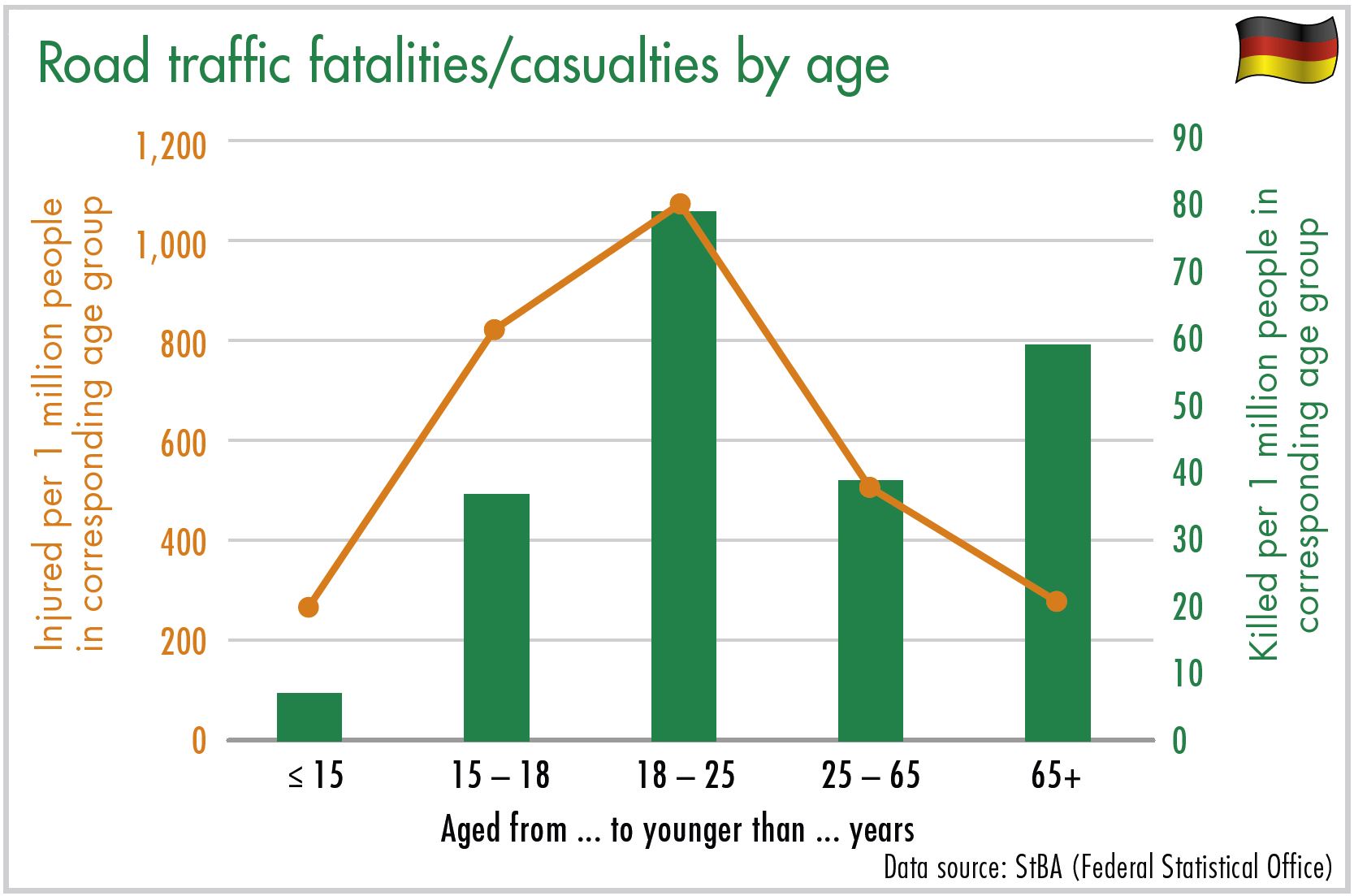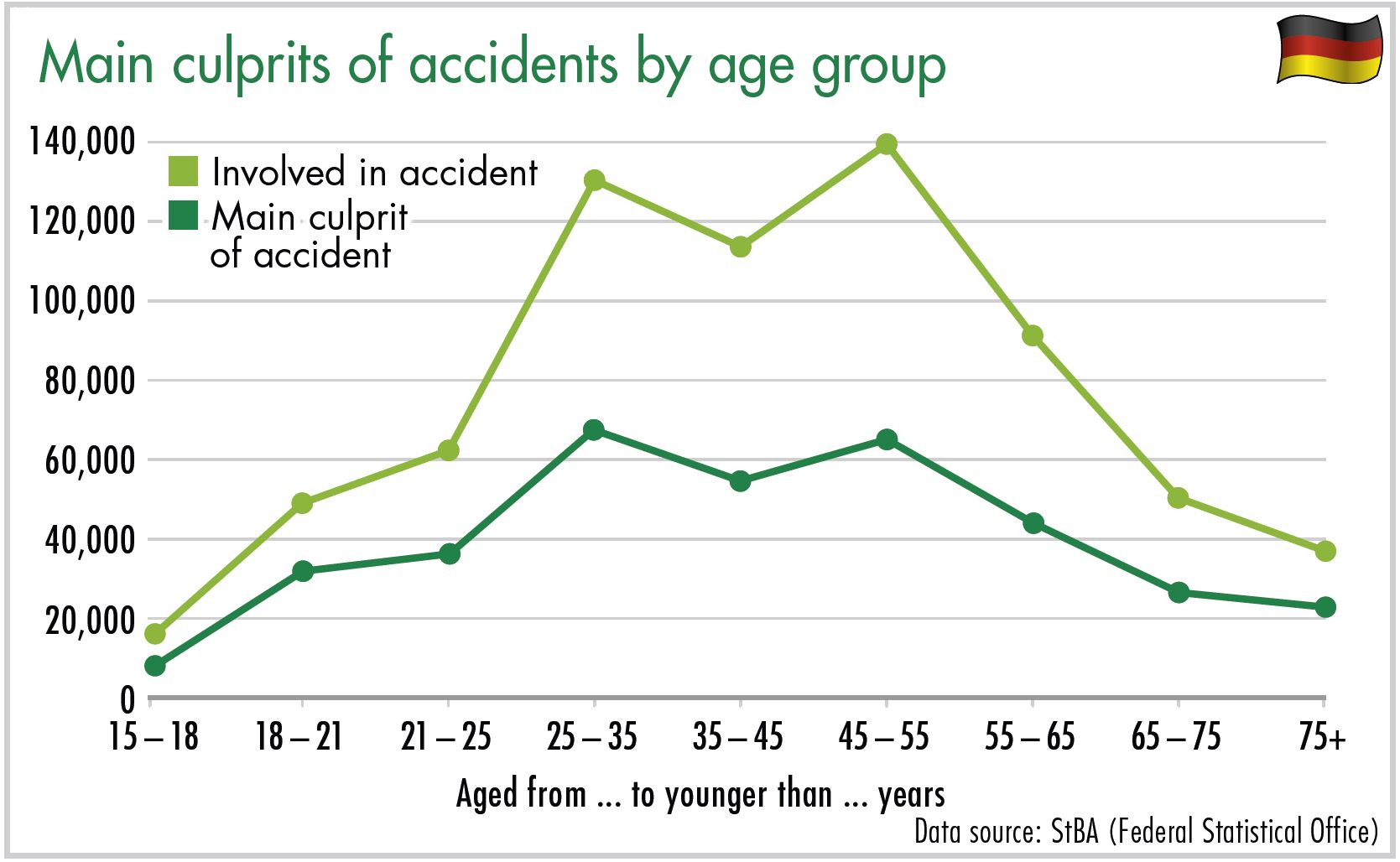Driving blind
Another rapidly growing problem associated with a high risk of accidents is driver distraction. As the results of a survey conducted by DEKRA in the summer of 2015 among 1,100 car drivers in Germany show, many of them do not pay as much attention to the road as they should. Half (52%) of all car drivers surveyed use their cellphone while driving, almost 5% without the prescribed handsfree car kit. And that’s not all: More than one in five drivers (22%) program their navigation device while driving, while 8% play around on their smartphone. If their cellphone notifies them of a new text or chat message, 2% of drivers respond while driving and 7% respond while in stop-andgo traffic or at the next stoplight. Half (52%) of all drivers surveyed eat and drink at the wheel; 79% tune in to a radio station or insert a CD in the player. 3% of women apply makeup or brush their hair while driving. Only 5% of car drivers do not carry out any non-driving-related activity.
Young car drivers are especially prone to becoming distracted by their smartphones. Of the respondents aged 25 and younger, 5% respond to text messages while driving. 16% send a message while in stop-and-go traffic or at the next stoplight. 15% of young drivers – so almost double the average – use their smartphone at the wheel. Even talking on a cellphone while driving – with or without a prescribed hands-free car kit – can severely distract drivers from what is happening on the road. The risk of an accident increases significantly especially in more complex traffic situations such as in dense traffic or on winding roads – and this is particularly so for all actions that force the driver to take their eyes off the road ahead. At 80 km/h, even just one second of inattention is equivalent to 22 meters of blind driving.
Risk optimization is essential
Given the hazards that distractions behind the wheel pose for all road users, a special colloquium devoted to this very issue was held at the beginning of December 2015 by the German Road Safety Council. At this event, whose supporters included DEKRA, Professor Mark Vollrath from Braunschweig University of Technology referred to a US study stating that reading and writing text messages increase the risk of an accident 164-fold. It also stated that the distracting effect of talking on a cellphone while driving is equivalent to a blood alcohol concentration of 0.8, while the distracting effect of writing text messages is equivalent to a blood alcohol concentration of 1.1. Furthermore, road users showed insufficient awareness of the dangers of averting their gaze from the road. The compensating measures drivers usually take – for example, slowing down or increasing their distance from the vehicle ahead – are insufficient in the case of text messages.
The Austrian psychologist Dr. Gregor Bartl proposed some urgent measures, including the standardized, EU-wide recording of driver distraction as a cause of accidents; the inclusion of a standardized distraction task in driving tests and driver training; and coverage of the issue in the training received by professional drivers. As Dr. Walter Eichendorf – President of the German Road Safety Council – explained, the legal regulations concerning the use of cellphones at the wheel need to be urgently updated, whereby any new regulation should apply not only to drivers of cars or other vehicles but also to pedestrians.
The overall take-away from this is that secondary tasks carried out by people out and about on the roads – whether car drivers or pedestrians – mean that they are unable to devote their full attention to what is happening around them. Even operating the various technical, in-car devices requires some degree of attention – attention that is no longer focused on the road ahead. Due to the brain’s restricted capacity to process information, drivers may fail to spot and process key information.


